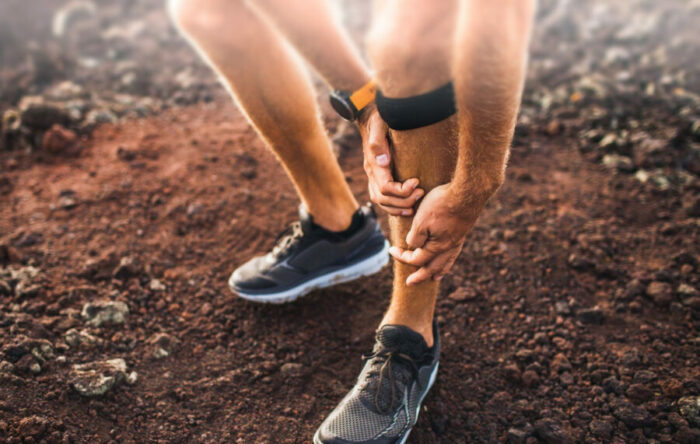Hiking, a beloved outdoor activity, offers stunning views and a great workout․ However, like any physical activity, it comes with potential risks․ One common complaint among hikers is shin splints, a painful condition affecting the lower leg․ Understanding the causes, prevention, and treatment of shin splints is crucial for enjoying a pain-free hiking experience․ This article will explore the relationship between hiking and shin splints, providing valuable insights for hikers of all levels․
What are Shin Splints?
Shin splints, also known as medial tibial stress syndrome (MTSS), refer to pain along the shinbone (tibia)․ This pain typically occurs on the front or inner side of the lower leg․ It’s often caused by overuse and repetitive stress on the shinbone and the connective tissues that attach muscles to the bone․
Symptoms of Shin Splints
- Pain along the shinbone, which can be sharp or dull․
- Tenderness to the touch along the shinbone․
- Pain that worsens during and after exercise․
- Swelling in the lower leg․
Can Hiking Cause Shin Splints?
Yes, hiking can indeed cause shin splints․ Several factors related to hiking contribute to the development of this condition:
- Overuse: Hiking, especially long or strenuous hikes, places significant stress on the lower leg muscles and bones․
- Uneven Terrain: Hiking on uneven trails, rocky surfaces, or steep inclines increases the workload on the shin muscles․
- Inadequate Footwear: Wearing worn-out or inappropriate hiking boots can fail to provide adequate support and cushioning, increasing the risk of shin splints․
- Poor Conditioning: Hikers who are not properly conditioned or who increase their hiking intensity too quickly are more susceptible to shin splints․
- Biomechanical Issues: Problems like flat feet or overpronation can contribute to shin splints by altering the biomechanics of the lower leg during hiking․
Preventing Shin Splints While Hiking
Preventing shin splints is always better than treating them․ Here are some effective strategies to minimize your risk:
Proper Footwear
Invest in high-quality hiking boots that provide good support, cushioning, and stability․ Ensure they fit properly and are broken in before embarking on long hikes․
Gradual Progression
Increase your hiking distance and intensity gradually․ Avoid pushing yourself too hard, especially when starting a new hiking season or tackling more challenging trails․
Strength Training
Strengthen the muscles in your lower legs, including the calf muscles, tibialis anterior (shin muscle), and ankle stabilizers․ Exercises like calf raises, toe raises, and ankle circles can be beneficial․
Stretching
Regularly stretch your calf muscles and shin muscles․ Hold each stretch for at least 30 seconds․
Proper Warm-up and Cool-down
Always warm up before hiking with light cardio and dynamic stretching․ Cool down afterward with static stretching to improve flexibility and reduce muscle soreness․
Consider Orthotics
If you have flat feet or other biomechanical issues, consider using orthotic inserts in your hiking boots to provide additional support and correct alignment․
Factoid: Wearing compression socks during and after hiking can improve blood flow and reduce muscle fatigue, potentially helping to prevent shin splints․
Treating Shin Splints
If you develop shin splints, it’s important to address them promptly to prevent the condition from worsening․ Here are some common treatment options:
- Rest: Reduce or stop hiking and other activities that aggravate the pain․
- Ice: Apply ice packs to the affected area for 15-20 minutes several times a day․
- Compression: Use a compression bandage to help reduce swelling․
- Elevation: Elevate your leg to further reduce swelling․
- Pain Relief: Over-the-counter pain relievers like ibuprofen or naproxen can help manage pain and inflammation․
- Physical Therapy: A physical therapist can provide exercises to strengthen and stretch the muscles in your lower leg and improve your biomechanics․
FAQ About Hiking and Shin Splints
Q: How long does it take for shin splints to heal?
A: The healing time for shin splints varies depending on the severity of the condition․ Mild cases may resolve within a few weeks with rest and conservative treatment․ More severe cases may take several months to heal․
Q: When should I see a doctor for shin splints?
A: You should see a doctor if your pain is severe, doesn’t improve with rest and home treatment, or if you suspect a stress fracture․
Q: Can I hike through shin splints?
A: It’s generally not recommended to hike through shin splints․ Continuing to hike can worsen the condition and prolong the healing process․ Rest is crucial for recovery․
Q: Are there specific stretches that help with shin splints?
A: Yes, stretches like the calf stretch (leaning against a wall with one leg extended behind you) and the tibialis anterior stretch (pointing your toes and pulling them back towards your shin) can be helpful․
Q: What type of terrain is most likely to cause shin splints while hiking?
A: Hiking on hard, uneven surfaces, especially downhill, puts extra stress on the shin muscles․ Trails with a lot of rocks or roots can also increase the risk․
Q: Can changing my hiking technique help prevent shin splints?
A: Yes, focusing on a shorter stride length and landing more softly can reduce the impact on your lower legs․ Avoiding excessive heel striking can also be beneficial․
Shin splints can be a frustrating setback for hikers, but understanding the causes, implementing preventative measures, and seeking appropriate treatment can help you stay on the trail․ By prioritizing proper footwear, gradual progression, strength training, and listening to your body, you can minimize your risk and enjoy a lifetime of pain-free hiking adventures․ Remember to consult with a healthcare professional if you experience persistent or severe shin pain․

